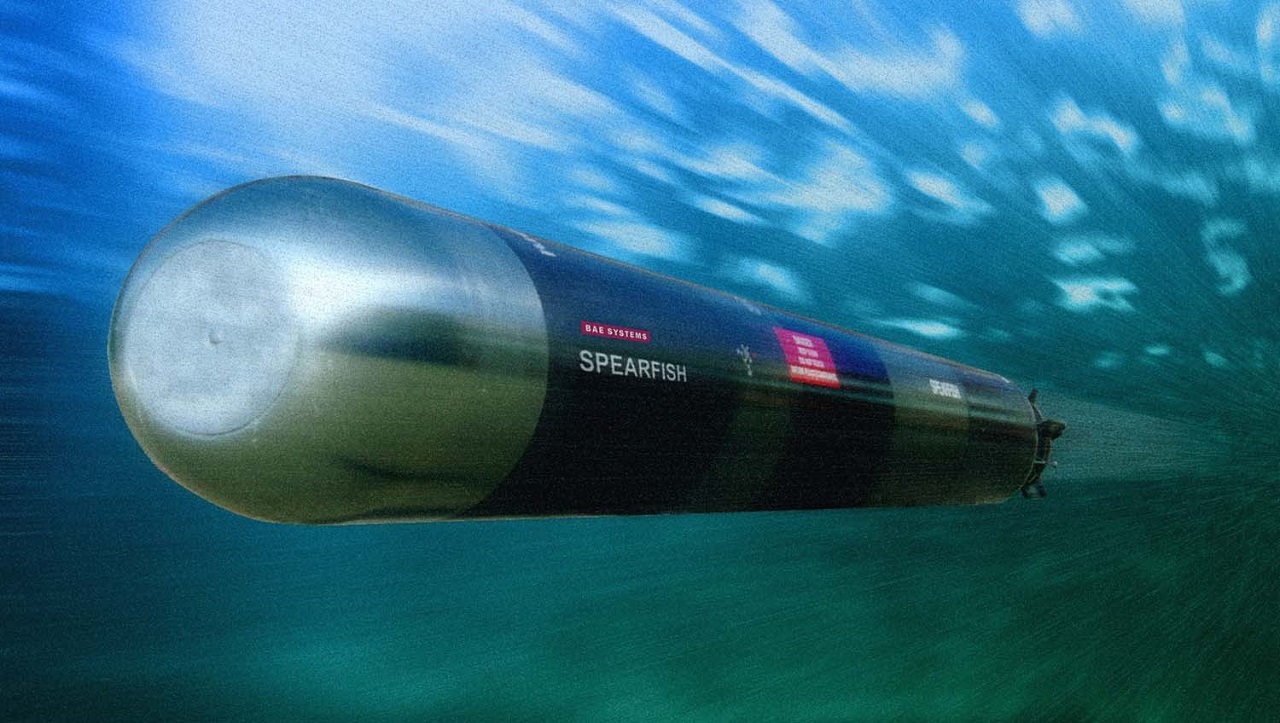The new torpedo was tested over the course of four days at special ranges near the Kyle of Lochalsh on the northwest coast of Scotland, located around fifty-five miles west-southwest of Inverness.
It was just over 150 years ago that British engineer Robert Whitehead developed the first effective self-propelled torpedo—and prior to that point the term “torpedo” was used to describe a variety of underwater mines and booby-traps. But beginning with the Whitehead torpedo the term now is for a self-propelled projectile that travels under or on the water.
Now the Royal Navy has announced that “the world’s most advanced torpedo is on the cusp of entering service” following extensive trials in Scotland. The upgraded “Spearfish”—the principal weapon of the UK’s submarine flotilla against enemy ships and submarines—was reportedly “fired” repeatedly at the frigate HMS Sutherland as scientists, engineers and sailors studied its performance.
The original Spearfish torpedo entered service with the Royal Navy in the 1990s, and this recent £270million upgrade ($350 million) included a new warhead, safer fuel system, and what has been described as an enhanced electronic “brain.” A team of around one hundred engineers and naval weapons experts at BAE Systems in Portsmouth spent nearly six years improving the torpedo.
The new torpedo was tested over the course of four days at special ranges near the Kyle of Lochalsh on the northwest coast of Scotland, located around fifty-five miles west-southwest of Inverness. The improved weapon was put through the paces in a number of exercises, which included testing the software and hardware enhancements. The Plymouth-based frigate, which took part in the drills, did its utmost to fend off the attacks.
The Spearfish was set to “run deep” for safety reasons, so the mock engagement was only played out on the displays on the Sutherland’s ship’s operations room.
“During the trial this week we have put our elite training into action, using a variety of underwater sensors to locate and track the weapon,” said twenty-three-year-old Able Seaman Matthew Brown from Perth, one of the underwater warfare specialists who’s been tracking Spearfish. “Having one of the most advanced and capable torpedoes in the world fired at you certainly puts the pressure on.”
A final trial of Spearfish will take place at the British Underwater Test and Evaluation Centre (BUTEC) later in 2020 before the weapon is declared operational and begins being delivered to the submarine fleet.
Once deployed the Royal Navy has said that the improved Spearfish would break the backs of frigates, destroyers and similar-sized warships and even take out any underwater threats. The torpedo will be introduced to frontline hunter-killer and nuclear-deterrent submarines over the next three years and will be in service into the 2050s.
Navies around the world have worked to develop more advanced torpedoes and earlier this year the U.S. Navy began testing a Very Lightweight Torpedo that was developed by Northrop Grumman; while last month it was announced that Russia had developed its Skhval, which has a reported speed of two hundred knots. Multiple nations have sought to develop “supercavitating” torpedoes that are rocket-propelled and can ride inside an air bubble.
The technology has certainly come a long way since the rather simple Whitehead torpedo.

The Royal Navy Has Developed The World’s Most Advanced Torpedo
The new torpedo was tested over the course of four days at special ranges near the Kyle of Lochalsh on the northwest coast of Scotland, located around fifty-five miles west-southwest of Inverness.


